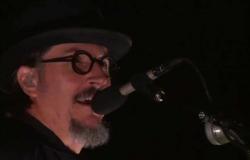The story begins with the commitment of Estela, who left precarious living conditions in southern Chile, to a rich family in Santiago. The couple was looking for a “domestic worker, good presentation, full-time”. She will be required to take care of the unborn child as much as to ensure that the residence is “clean”, meaning impeccable, spotless.
Surgical precision
Estela is 33 years old when she starts working, seven more when Julia, the little girl, dies. The one who has her room in a storage room next to the kitchen calls her employees Monsieur and Madame. It is with surgical precision that Alia Trabucco Zerán describes the tasks that Estela accomplishes over the course of a day. Her look at class relations is incisive, not to mention the condescension she receives. All this told in the first person. Own is a remarkable novel about the relationships of domination and money whose form is as original as it is astonishing: both the reader and the reader are regularly taken to task.
“Seven Empty Houses” by Samantha Schweblin
As we read, with each action, we believe that the danger is coming even if this does not necessarily materialize. But when this happens, we come away completely upset. In a chest of drawers are stored the maid's six uniforms (for each day of the week, Sunday being her holiday). Chilling is the passage where Julia grabs one of the clothes to “play” the role of her nanny in front of Estela. Disturbing the one where the child threatens to denounce her. Because Estela hides certain things.
The mastery of Alia Trabucco Zerán results in an oppressive thriller. Which also questions “reality and unreality”notions used by the writer.
⇒ Own | Novel | Alia Trabucco Zerán, translated from Spanish (Chile) by Anne Plantagenet | Robert Laffont, “Pavillons” collection, 271 pp., €20.90
EXTRACT
“I warned you from the start that this story has several beginnings: my arrival, my mother, my silence, the dog Yany, washing the dishes, ironing the shirts and filling the fridge. But each beginning, inevitably, leads to the same end. Like the threads of spider webs which are all connected in the center.”






